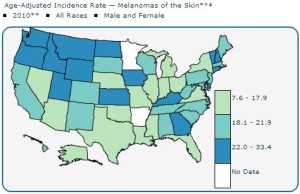Obviously, you mean well. Everybody knows that. However, there are a few things that cancer patients are sick of hearing.
How are you feeling?
Whether you are legitimately curious or just feel like it’s the appropriate thing to ask, hold up for a minute. This person is sick. Chances are, they are not, haven’t been and won’t be feeling their best for a while.
Try instead: “How are you feeling after the Packers DESTROYED the Bears last night? Boom!”
When is the last time you heard from…?
It does not matter whose name you put at the end of that question. If your loved one hasn’t heard from them in a while, the last thing they want is a reminder of that. Fairweather friends are the worst. Don’t make it harder by rubbing your loved one’s face in it.
Try instead: “Dude, do you remember that time we hid in the girls’ locker room and got busted? Good times, man.”
Have you thought about trying [insert next big thing in medicine/meditation/religion here]?
You can be sure that your loved one has heard it all. Vapors, vespers, vaccinations—the lot of it. Besides the recommendations of their doctor, family and strangers under the mistaken impression that their opinion matters, a cancer patient has probably done some research of their own here and there. Even if they haven’t heard of your method yet, there is not a large chance that they want to discuss it during the current interaction.
Try instead: “I care about you and want to help however I can.”
I’m sure you’ll do better than [insert cancer patient that didn’t make it].
This might be true, and it is almost definitely well-meaning. However, this falls along the same lines as a backhanded compliment—and one with no basis, at that. Are you the doctor of both patients? No? How could you be so sure?
In phrases like these, there’s some positivity expressed, but it is almost entirely negated by the depression that ends the sentence. This kind of so-called empathy does two things: shreds hope and makes it about someone else.
As hope and individuality are two of the best things you can give to a cancer patient, keep the lost causes to yourself.
Try instead: “You rock the bald look better than Britney ever could.”
Be present in some way. How would you like to be subject to the phantom-friend scenario?
“Are they really there for me?” your loved one might ask.
Of course you are! Say so! Respect, active listening and love means you can’t nix communication completely, even though talking with a cancer patient can leave you feeling lost in the woods at times. While you may never be able to successfully put yourself in their shoes, doing your best to understand how cancer patients are feeling will go a long way in navigating the conversations you have with them.





